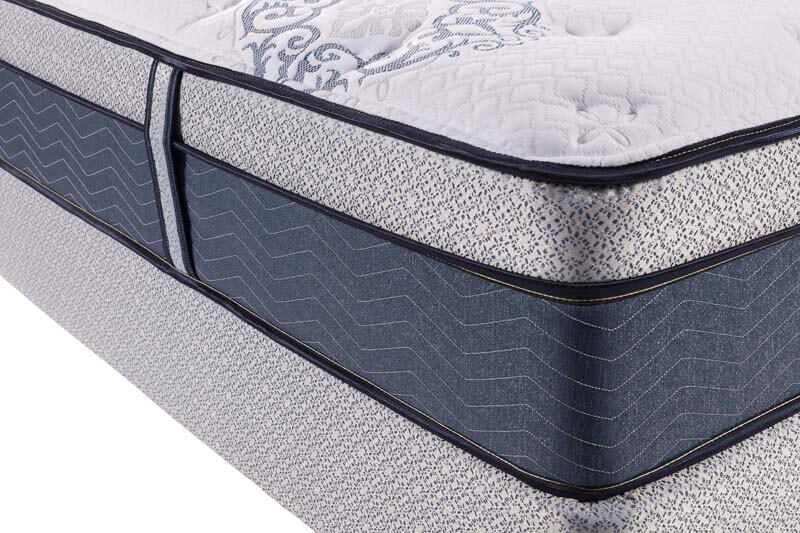Every purchase made online is encrypted with a high level of security you’ve come to expect. Your private information is never shared nor sold, so you can buy with confidence. You can also visit our store if you are in the St. Louis area.

Table of Contents
The Cavitation Conundrum
So you just went out and spent few hundred maybe even a thousand or more of your hard-earned money on a new mattress. Within months you notice things are not feeling quite right and the discomfort seems to be associated with the collapse and cavitated bed surface that has left body impressions where you lay. You bought a mattress but you feel like you’re sleeping in a canoe or a hammock. You’re wondering, How does this happen? Why is my new mattress failing? Let’s do a diagnosis.
Stability is built on a solid base
A wise man builds his house on a rock and a good house starts with a strong concrete foundation for a solid, stable home. When it comes to mattresses the same principals apply. A steel bed frame provides a solid base. The frame should be solid and strong with plenty of feet going to the floor. A minimum of one foot going to the ground is a required for warranty on any queen size set and it is the same for a king. Kings sizes have split twin extra-long box springs and a bar crossing at the head, center, and foot with feet going to the floor is usually necessary. NOTE: The bare minimum required for warranty is not a good indicator on if the mattress set is properly supported. A heavy duty frame or center support is recommended. It’s important to have multiple steel bars with feet going to the floor. A good recommendation would be my heavy duty frame line such as the Q33 or K43 for Queen and King. For wooden beds with wood side rails, I highly recommend the GS3XS or my heavy duty BB8-18 or BB5. Not having this kind of support is a recipe for failure.
The Perfect Elevated Plateau
Let’s say your frame meets the criteria listed above. We can then move onto the box spring to make sure that it is properly supported. A foundation / box spring is a level raised surface that sits on top of the bed frame that is specifically designed to lay a mattress upon. Most, not all, manufactures require mattresses to be on a rigid foundation these days. This means that there is no give to the foundation. The best way to know is by pushing down on the box spring and seeing if it has any give or flexibility to it. If the boxspring / foundation is older and from a previous bed, it is usually best to replace the old base. More often than not people who do not replace it find that it leads to issues like inadequate support, premature mattress sag, and worst of all avoided warranty from the manufacturer of the new mattress. In most cases the old box base has taken a beating just like the mattress and since it was not a designed match for your new mattress and there is no way to test the piece for wear and steel fatigue, it is best to simply replace it. Without proper support the mattress can and will wear faster and unevenly.
If you have had problems with boxsprings bowing, squeaking, sagging, or breaking there is a stronger longer lasting solution than the standard foundation. The forever foundation and Space Saver are great alternative options.
Mattresses Matter
Once you have determined your frame and box spring have met the proper standards you can then focus on the mattress. There are many things that go into how a mattress wears. The average mattress set is made for the average size person, 180lbs. They use inferior, low quality, low grade materials that fail quickly under normal usage conditions. If you find yourself bigger than that or you simply want a more durable mattress, a heavier duty mattress like the Medicoil HD is a mattress made for you. Also, the industry one-sided mattress only has an estimated life of 4-5 years under the average size person. We still have two-sided mattresses which will give you a little more bang for your buck.
Failure is an expensive option
A mattress must be built of quality material if it is going to last, but a mattress set is more than just a mattress, it is a set. That set consists of a frame, a foundation, and mattress. Each is an important piece of the comfort, support, and durability puzzle. Each part plays an important roll in how it can last and how a mattress can fail.
